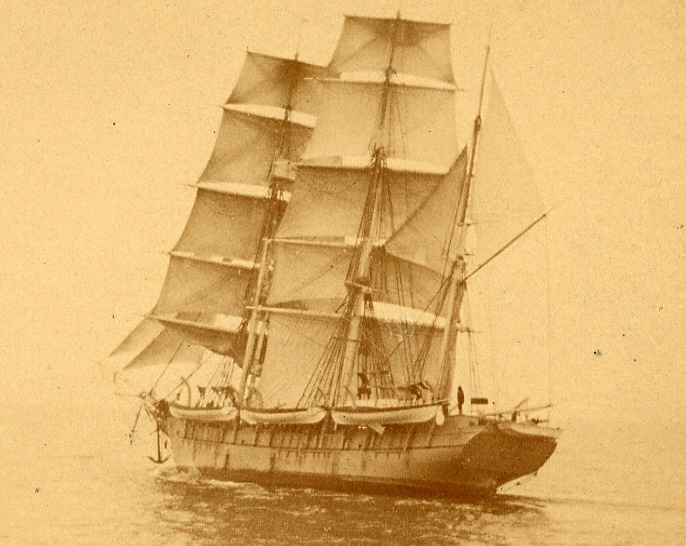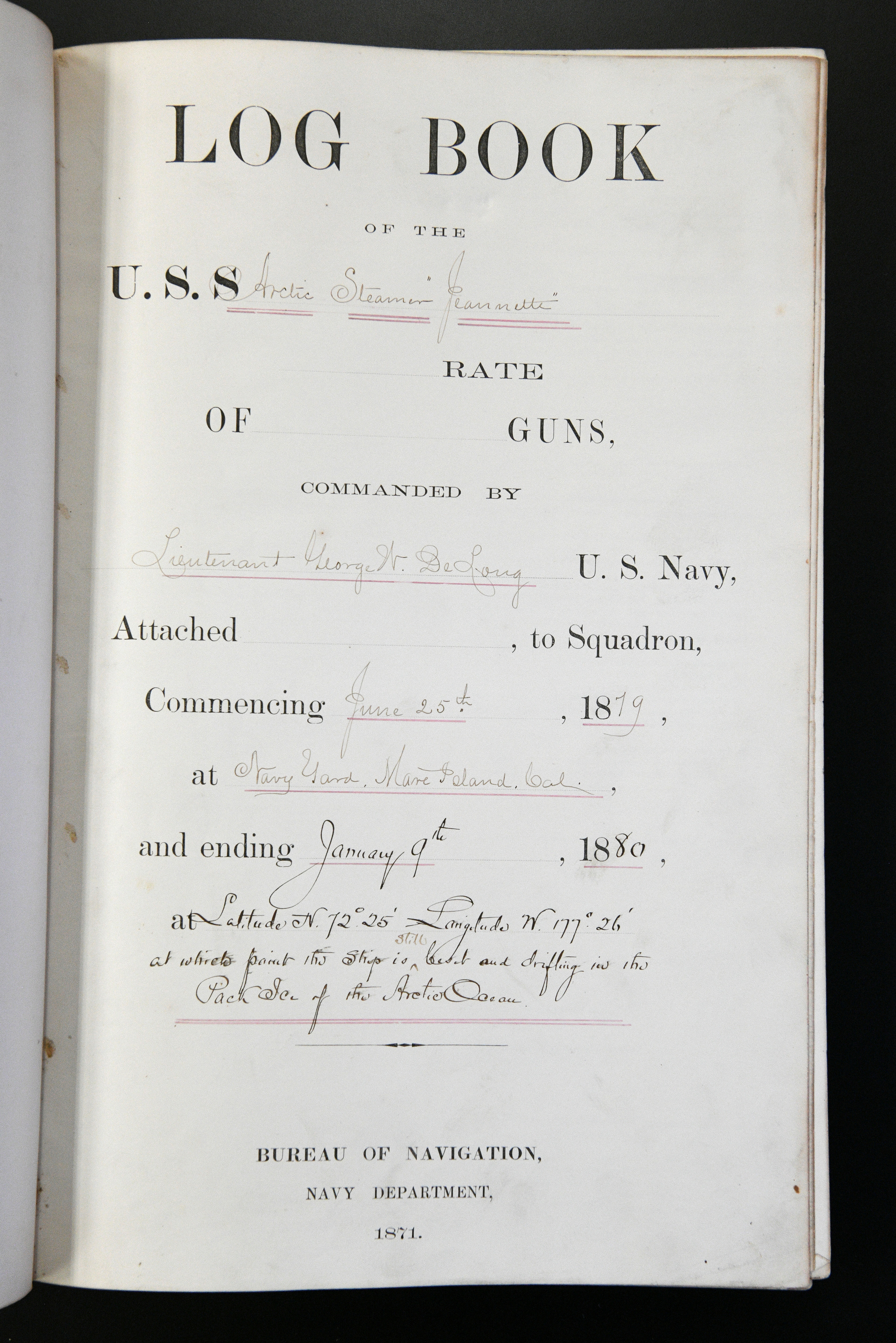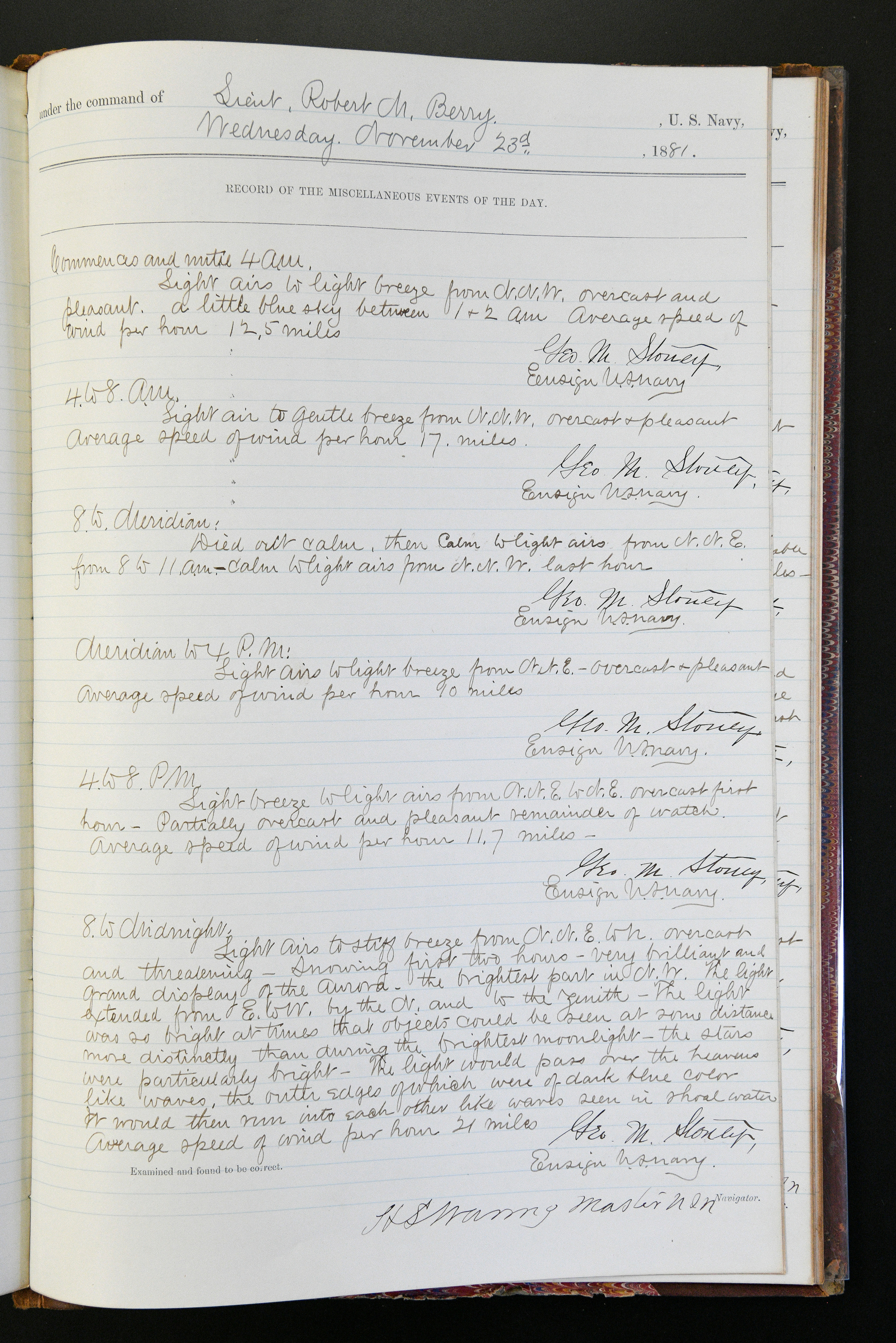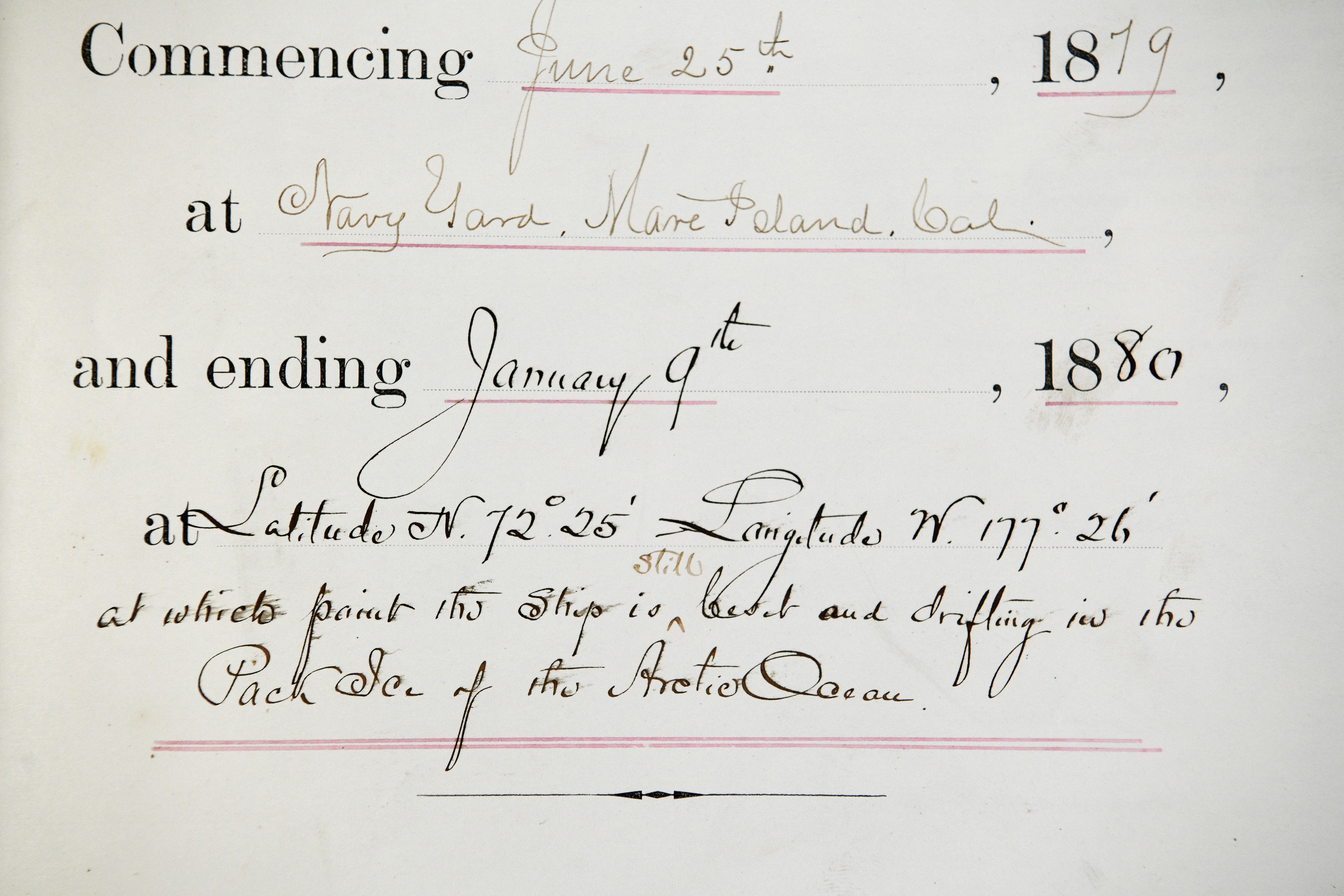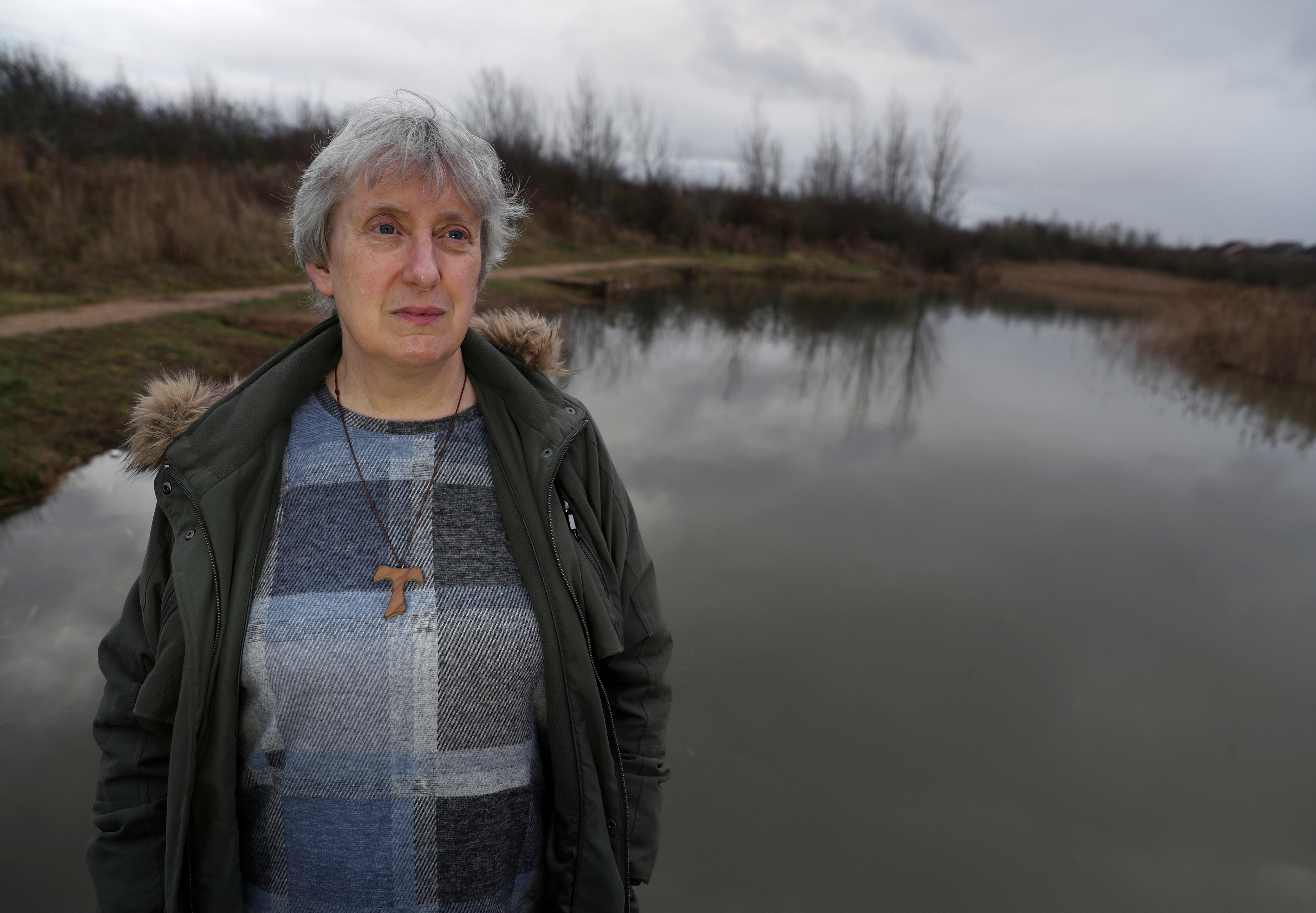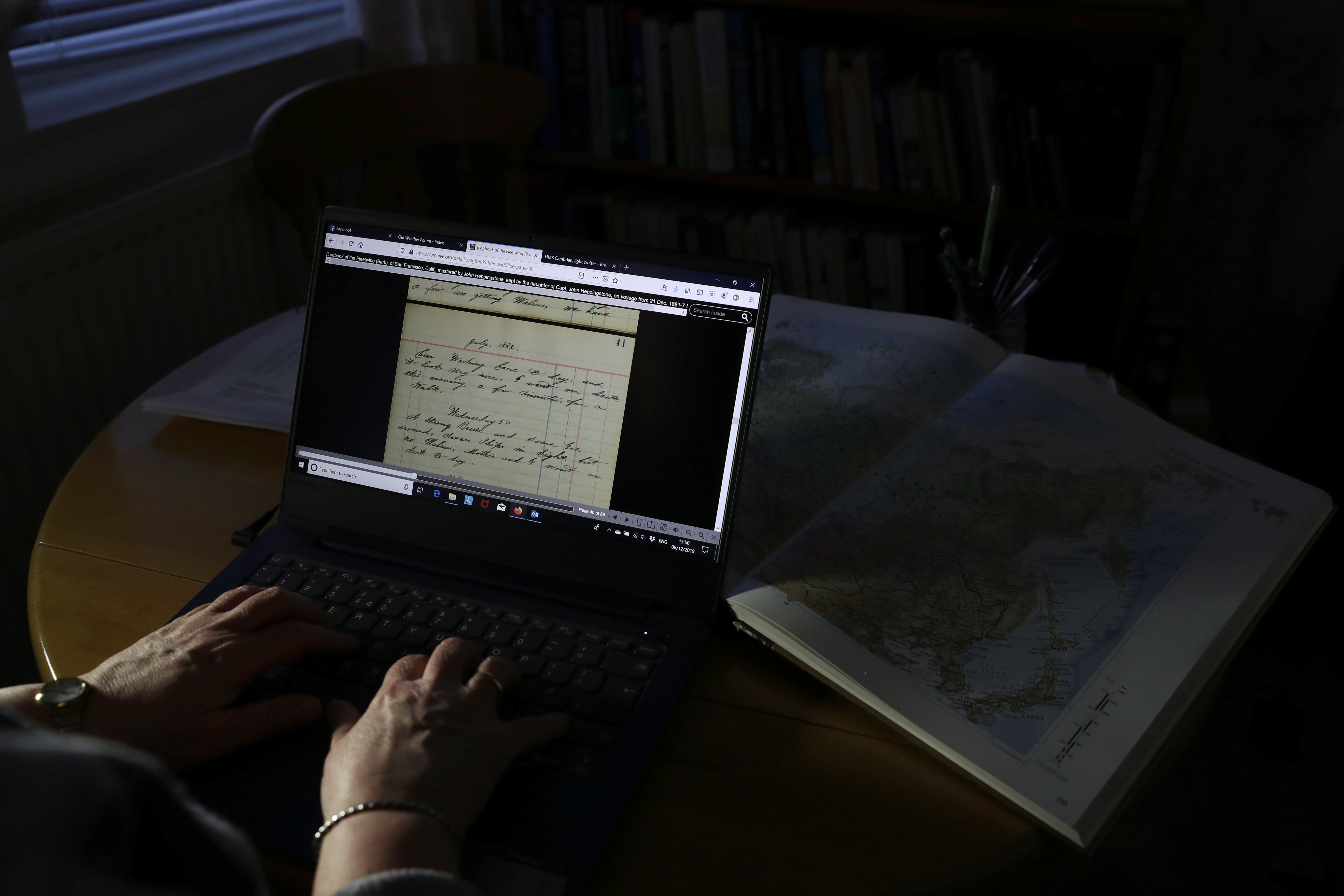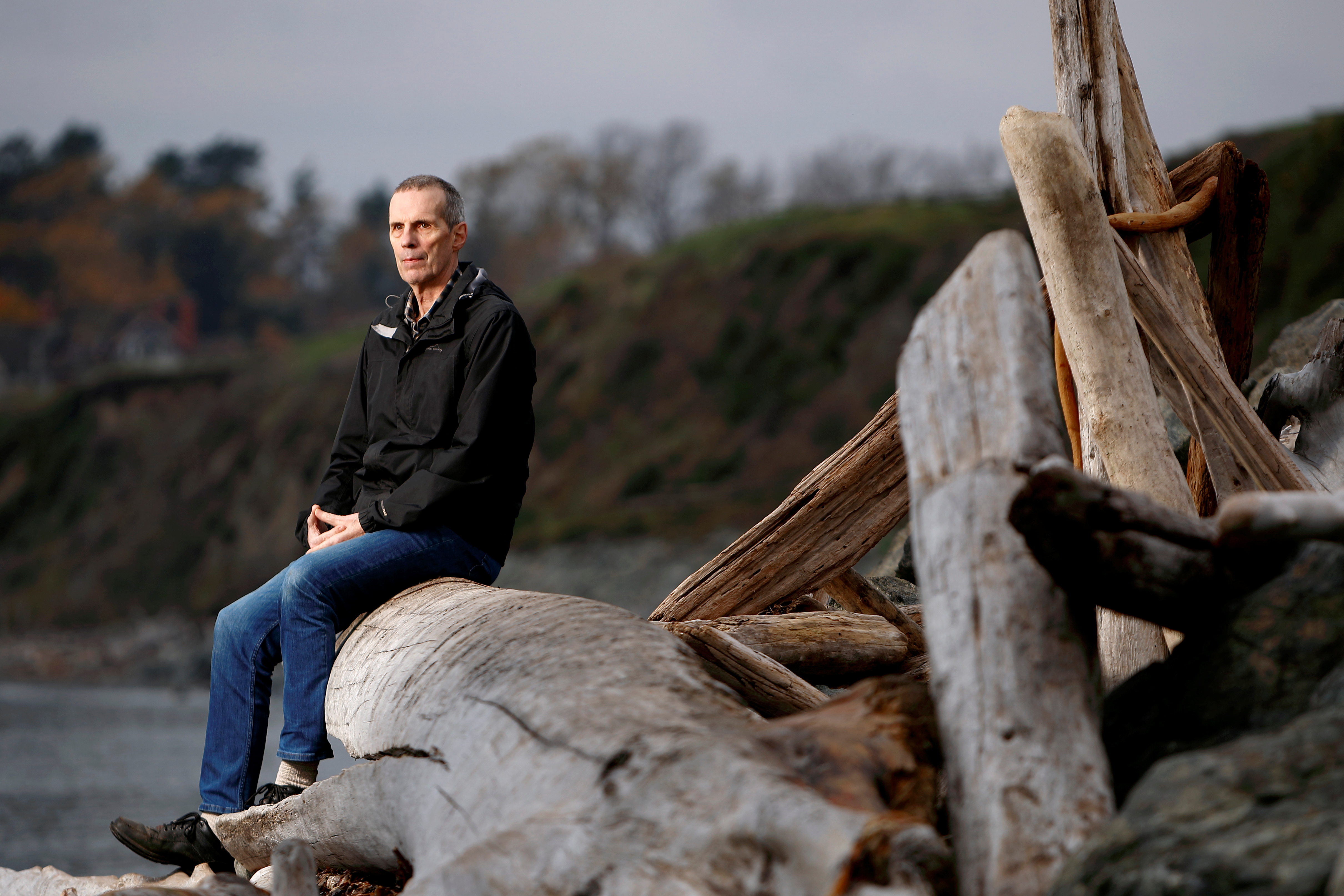How the secrets of 19th century ship logbooks are helping scientists understand Arctic climate change today
With the help of a dedicated group of volunteers, researchers are reconstructing the 19th century Arctic climate with great precision.
OXFORD, England — On November 14, 1881, an American called George Melville limped across a frozen delta in Siberia and pulled a pole from the snow with his frost-bitten hands.
Exhausted and half-starving, Melville was scouring the wasteland for fellow survivors of the most famous ship in the world. The USS Jeannette had set sail from San Francisco to conquer the North Pole. Instead, it quickly got trapped in ice and spent nearly two years drifting across the Arctic Ocean, lost to the rest of humanity.
When it was finally crushed by the ice, the Jeannette’s 33 crew members set out across the frozen sea. A storm separated them, and Melville mustered a team of locals in the desolate Lena Delta to find his missing shipmates. He braved the wilderness as the days grew shorter, his legs so swollen and blistered from exposure that he vomited with the pain.
First he found the pole. It marked the spot where George De Long, the Jeannette’s captain, had buried the valuables he had grown too weak to carry. They included Captain De Long’s most prized possessions: the ship’s four logbooks. These hefty, leather-bound volumes recorded, in intimate detail, the ill-fated Jeannette expedition and the discoveries it had made.
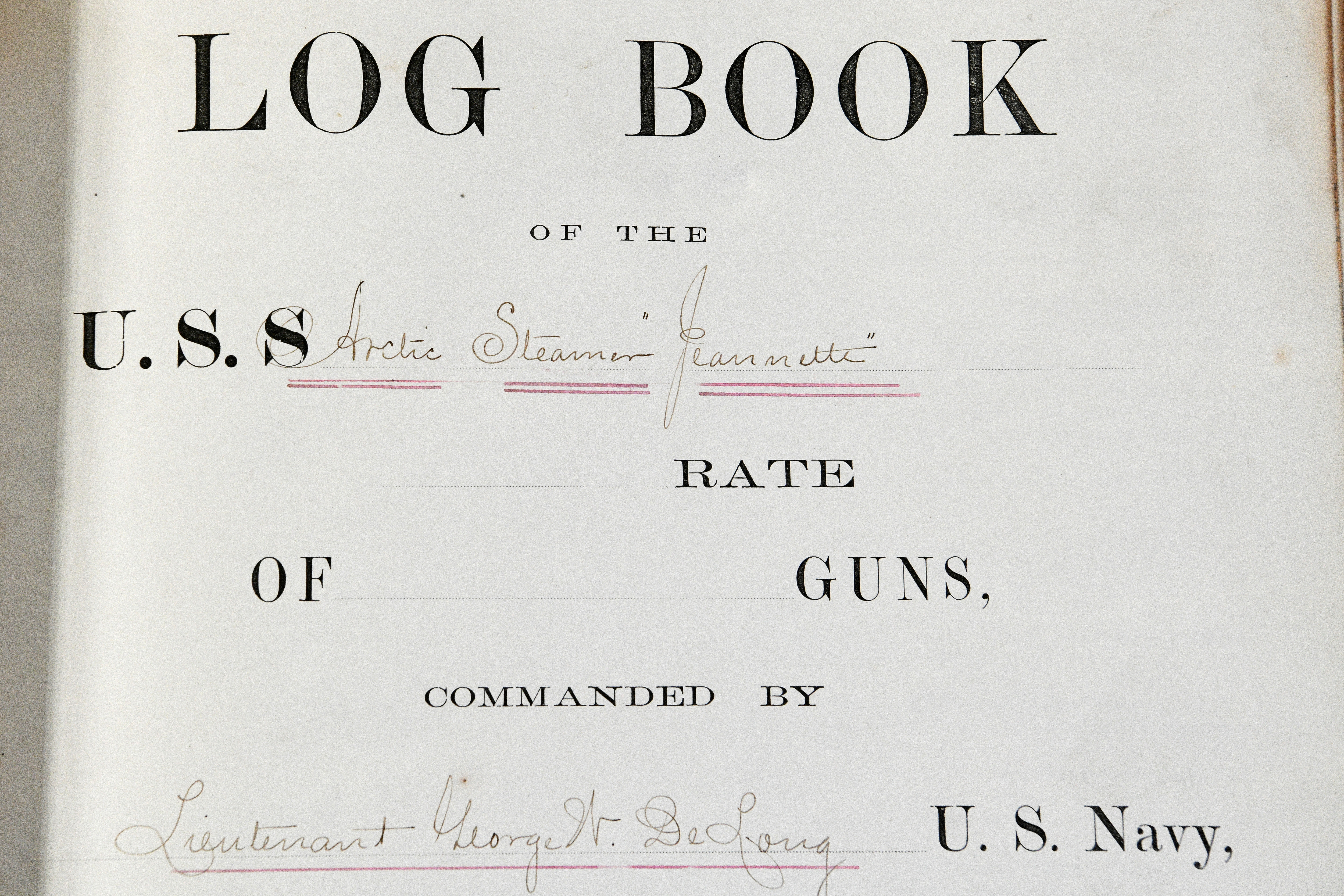
It took Melville four more months to find De Long’s body. Nineteen other crew members also died, their lives cut short by drowning, disease, exposure and starvation. But, thanks to Melville, the logbooks survived. Once, while battling through a snowstorm, he briefly considered reburying them to lighten his load, then changed his mind. “Setting my teeth against the storm,” he wrote, “I would swear a new oath to carry them through, let come what might.”
Thousands of miles away, and 138 years later, the Jeannette’s logbooks sit in a climate-controlled room in the U.S. National Archives in Washington, D.C. Every page has been digitized and uploaded to the web, then transcribed by an eccentric group of citizen-scientists called Old Weather.
[Using old weather to inform Arctic climate change work today]
For the past decade, its far-flung volunteers have shown that the Jeannette’s logbooks, and others like them, are more than what Melville called “the records … of our two years of toil and suffering.” They are rich repositories of data that can help us understand how profoundly the Earth’s climate has changed and what might happen to it in the future.
Meteorologists have long recorded the weather at land-based stations. But nearly three-quarters of the planet is covered by water, and that’s where most weather takes place. Thousands of ships have criss-crossed the oceans, noting the weather in handwritten logbooks that for decades sat forgotten in bookshelves and basements.
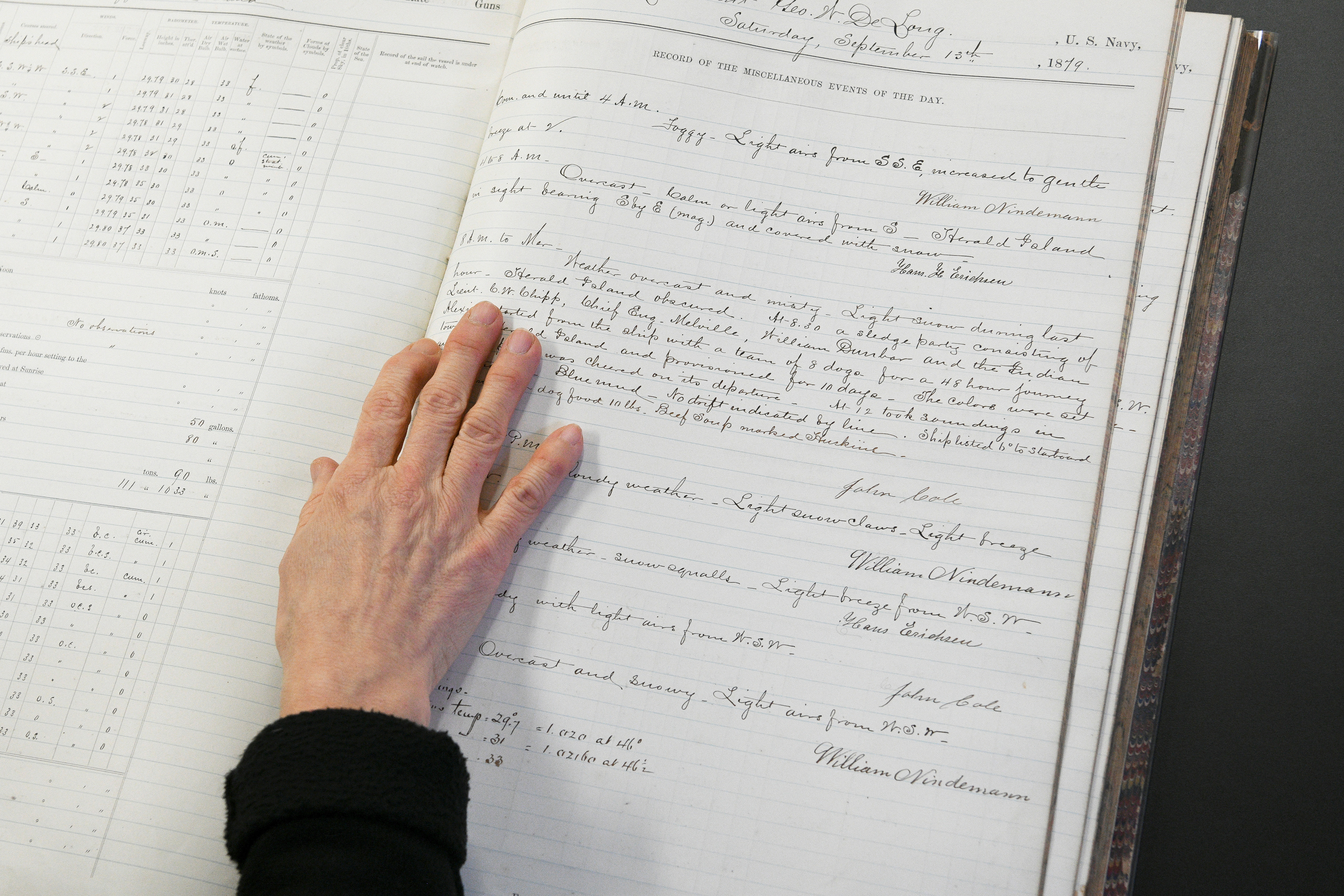
In a sometimes-obsessive quest, thousands of Old Weather volunteers have extracted millions of observations about barometric pressure, wind speed, air temperature and ice from the old logbooks. These are fed into a huge dataset at the U.S. National Oceanic and Atmospheric Administration, creating what NOAA calls “a dauntingly complex, high-resolution, four-dimensional reconstruction of the global climate that estimates what the weather was for every day back to 1836.”
Or, as NOAA has nicknamed it, “a weather time machine.”
Many of the ships, like the Jeannette, hail from the great era of Arctic exploration, when crews risked everything in a race for the North Pole. Ships plunged into the frozen unknown and vanished, inspiring other ships to launch daring but luckless missions to rescue them. In an age when Arctic ice is fast disappearing, many Old Weather volunteers also see their work as a rescue mission, but with much higher stakes, as the warming Earth makes its own leap into the unknown.
“A satellite view of 19th century weather”
Three years ago, a private Russian expedition searched in vain for the wreck of the Jeannette. The ship spent three days stuck in ice while hungry polar bears prowled around it. It didn’t, however, sink.
“That would have been quite ironic, don’t you think?” says Kevin Wood, who was on the ship.
Wood, a research scientist at both NOAA and the University of Washington in Seattle, is the lead investigator for Old Weather’s Arctic project.
Wood got involved in Old Weather after meeting its founder, a British meteorologist called Philip Brohan, at a conference in Baltimore. Over a drink at a nearby pub, Brohan explained his problem: Old Weather volunteers were working so quickly, they’d soon run out of the Royal Navy logbooks he had set them to transcribing in 2010.
So, in 2011, Wood set up a team at the National Archives to start digitizing its 80,000 or so logbooks from U.S. Navy and Coast Guard ships. Their weather observations, once extracted by volunteers, will help scientists build what Wood calls “essentially a satellite view of 19th century weather.”
At the time, these observations helped captains navigate safely and swiftly across a trackless sea. The logbooks were returned to naval authorities or ship owners, who used them to build pilot charts and guide later navigators. “Today, we can go back and reuse all that data, with a completely new purpose that they would never have imagined,” Wood says. “Every ship becomes part of our quest. Because the more data we have, the better the reanalysis will be.”
Wood handles the science for Old Weather, but as a sailor who spent more than 25 years roaming the world’s oceans, he seems equally smitten with the romance of the seafaring life. He describes himself as a “sporadically voracious reader” who devoured all 20 volumes of Patrick O’Brian’s high-seas adventure series, “Master and Commander,” in six weeks.
Although about 20,000 people have contributed to Old Weather over the years, Wood says a 50-strong community of stalwarts has done about half the work. One is Joan Arthur, who works as the office coordinator at an environmental institute at the University of Oxford. We meet on a chilly afternoon in late autumn, the city’s ancient, cobblestone streets teeming with students and tourists.
“Would you like some Victoria sponge cake?” she asks, leading me to a table in the institute’s tiny kitchen. Other staff come in and out, and at one point she breaks off to chat with a colleague about an algorithm that counts penguins.
Arthur, 61, whose father had served on a Royal Navy ship, first heard of Old Weather five or six years ago, through an ad on the university’s website.
She was soon captivated by the logbooks and the “thundering age” of exploration they recorded. “The stories are just so astonishingly epic,” she says. Her emails are punctuated with phrases such as “How exciting!” and “Oh joy!” One promises tales of “a mutiny, a death, a tussle with ice, scrappy writing, a spelling nightmare.”
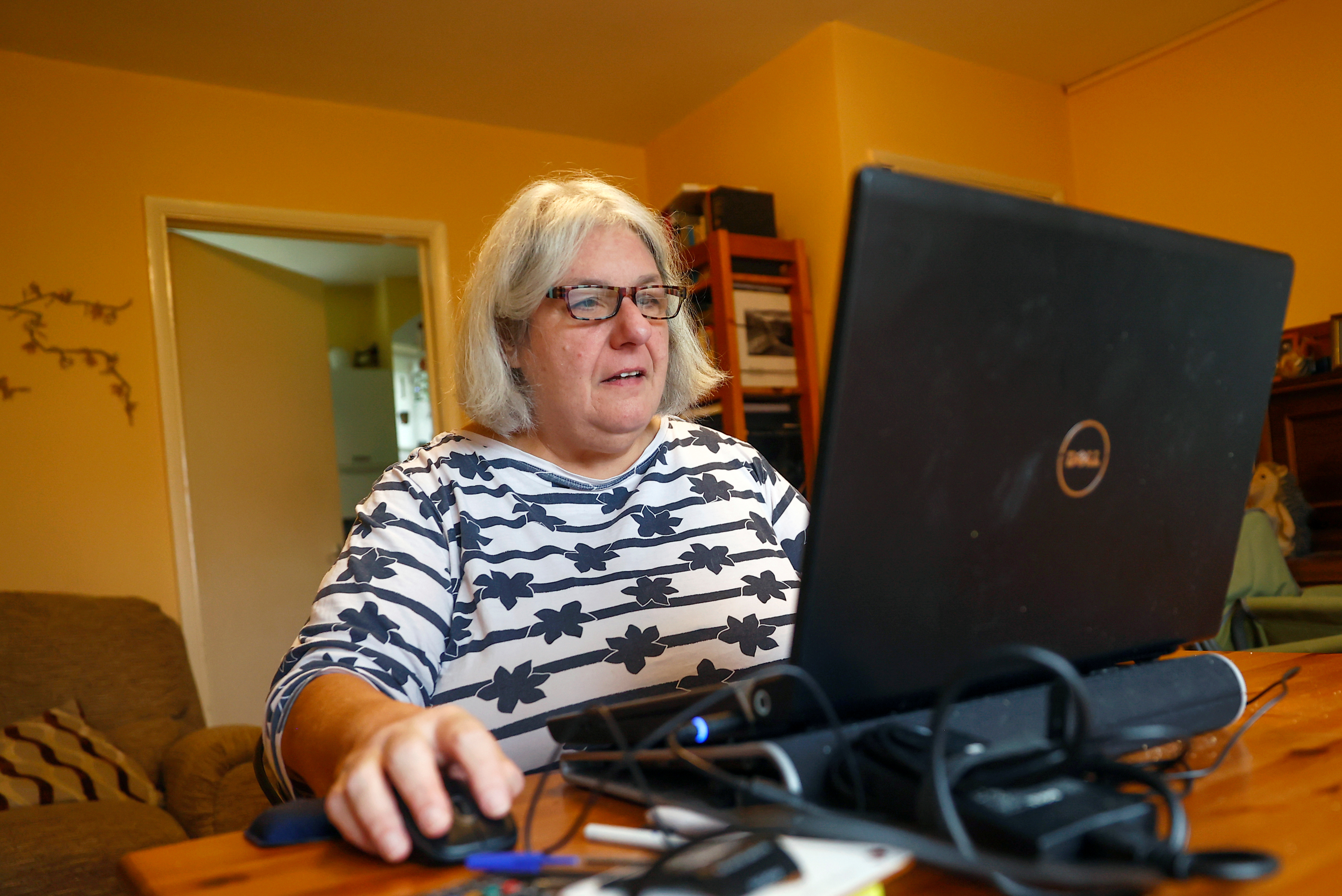
Arthur worked on the Jeannette’s logbooks, whose weather and ice observations have allowed researchers to reconstruct the climate in an area of the Arctic that was then almost unknown. “It was basically the moon,” Kevin Wood says. “We had no information about it.”
Old ships’ logs can also offer new insights into extreme events such as storms or floods, which happen infrequently and therefore need a long history to properly understand. Data from the Jamestown, another U.S. Navy ship, and the Jeannette was reanalyzed by NOAA’s “weather time machine” to reconstruct what had long been described as a hurricane that hit Sitka, Alaska in 1880. The reanalysis showed that it wasn’t a hurricane, but part of a much larger storm system known as an extra-tropical cyclone.
After working on the Jeannette for a while, Arthur switched to the Rodgers, a Navy ship that in 1881 was sent to find Captain De Long and his crew. She talks about the Rodgers as if it’s still afloat — “She’s a bit of a tub to sail” — but the Rodgers is long gone, its story almost as tragic as the ship it was meant to rescue.
A rescue goes terribly wrong
The Rodgers sailed from San Francisco on June 16, 1881, with 38 men on board. They had no way of knowing that, three days earlier, the Jeannette had already been crushed by the ice, and De Long and his shipmates had begun their desperate journey over a no-man’s land toward Siberia.
At first, the Rodgers sailed west, crossing the North Pacific to resupply at a port on Russia’s Kamchatka Peninsula. Then it headed north, passing through the Bering Strait, the sliver of ocean separating two continents, and into barely charted Arctic waters teeming with walruses, polar bears and whales. It was greeted by displays of the northern lights, which the ship’s awestruck logkeeper describes in terms of what sailors know best — the sea:
“26 September: Remarkably bright star light and intensely brilliant and active aurora … It would occasionally burst into still brighter luminosity and the thin arcs uniting would form one broad belt of light heaving and tossing like the sea in a gale.”
Nearly all U.S. Navy vessels had a scientific component, and the Rodgers was no exception. The instruments on board — chronometer, thermometer, barometer, compass — were, at the time, state-of-the-art. Its logbook begins with directions for recording everything from accidents and desertions to “the appearance of the Heavens.”
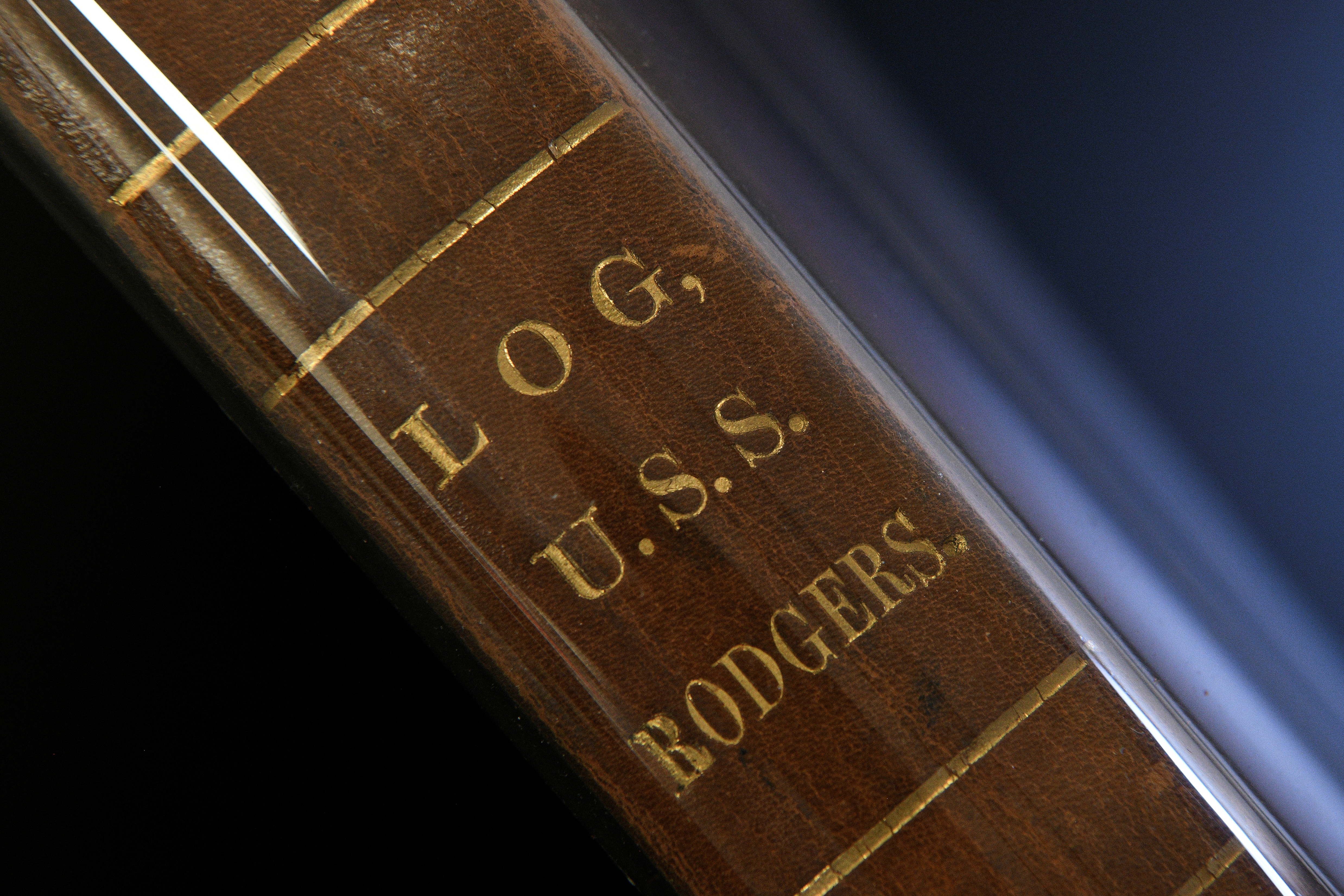
Every hour, the crew dutifully noted the ship’s speed and course, as well as the temperature, weather, wind conditions and barometric pressure. By late August, as the Rodgers neared Wrangel Island, the log began making the observations about ice that future scientists would find so valuable. For the Rodgers, however, monitoring the shifting ice that could trap or even scupper it was a matter of life or death:
“Midnight to 2.20am: Ship in pack ice partially. Hove to under spanker and jib. 2.20am: Started ahead slowly under steam to work ship out of ice. Ship struck several times against heavy cakes. . . Shifting course to avoid ice, making good North-East.”
Twice the Rodgers changed course to investigate what looked like “a black mass resembling a ship”; both times it proved to be a ship-sized chunk of dirty ice.
With pack ice closing in, the Rodgers headed south again. It had found no trace of the Jeannette’s crew, who by this time had begun their arduous trek across the ice, hundreds of miles to the west. But the Rodgers was about to get a taste of what the missing sailors were suffering.
En route, the Rodgers sent ashore Charles Putnam, the ship’s 29-year-old master, and seven other crew members. Equipped with 18 dogs, two sleds and a year’s provisions, Putnam’s team had orders to continue the search for the Jeannette along the Siberian coast.
The Rodgers sailed on to evade the ice — only to be destroyed by a fire that started in its hold just five months into its mission. Its crew and its logbooks were rescued, although there was one casualty. The ship’s dog, a sorry-looking mutt called One-Eyed Riley, died in the fire.
When Charles Putnam heard that the Rodgers had been destroyed, he raced south to help his shipmates. On the way a storm blew up, and Putnam — separated from his guides, half-blinded by snow — drifted out to sea on a chunk of ice.
Later that day, he was spotted floating about seven miles offshore. “A vigorous attempt was made to rescue him by four of the Rodgers’s crew and two natives in a canoe,” according to an official dispatch, “but owing to the intervening ice they were unable to reach him and were obliged to put back after getting three miles from shore. This was the last ever seen of Putnam.”
Mutinies and auroras
“Poor Mr. Putnam,” Joan Arthur sighs. “I read that and it traumatized me for some time.” So did the death of One-Eyed Riley. “Bless his cotton socks,” she says. “He probably would have ended up in the pot anyway.” (Case in point: Snoozer, the last surviving sled dog on the Jeannette. The famished crew made him into what their captain called a “nauseating” stew.)
Most of her co-workers have gone home, and a janitor pushes a vacuum cleaner around Arthur’s feet. Oblivious, she taps at her laptop, explaining how the voyages of the Rodgers and the Jeannette provide scientific data not just about weather and ice.
In 2016, an academic paper on Arctic auroras was published in Astronomy and Geophysics, the journal of the Royal Astronomical Society in London. It was based on observations gleaned by Old Weather volunteers from the Jeannette’s logs, written while the ship was held captive by ice. Old Weather volunteers have also collected log entries about wildlife, kelp, comets and volcanic activity. “We’ve discovered volcanic eruptions that have not been recorded before,” Arthur says.
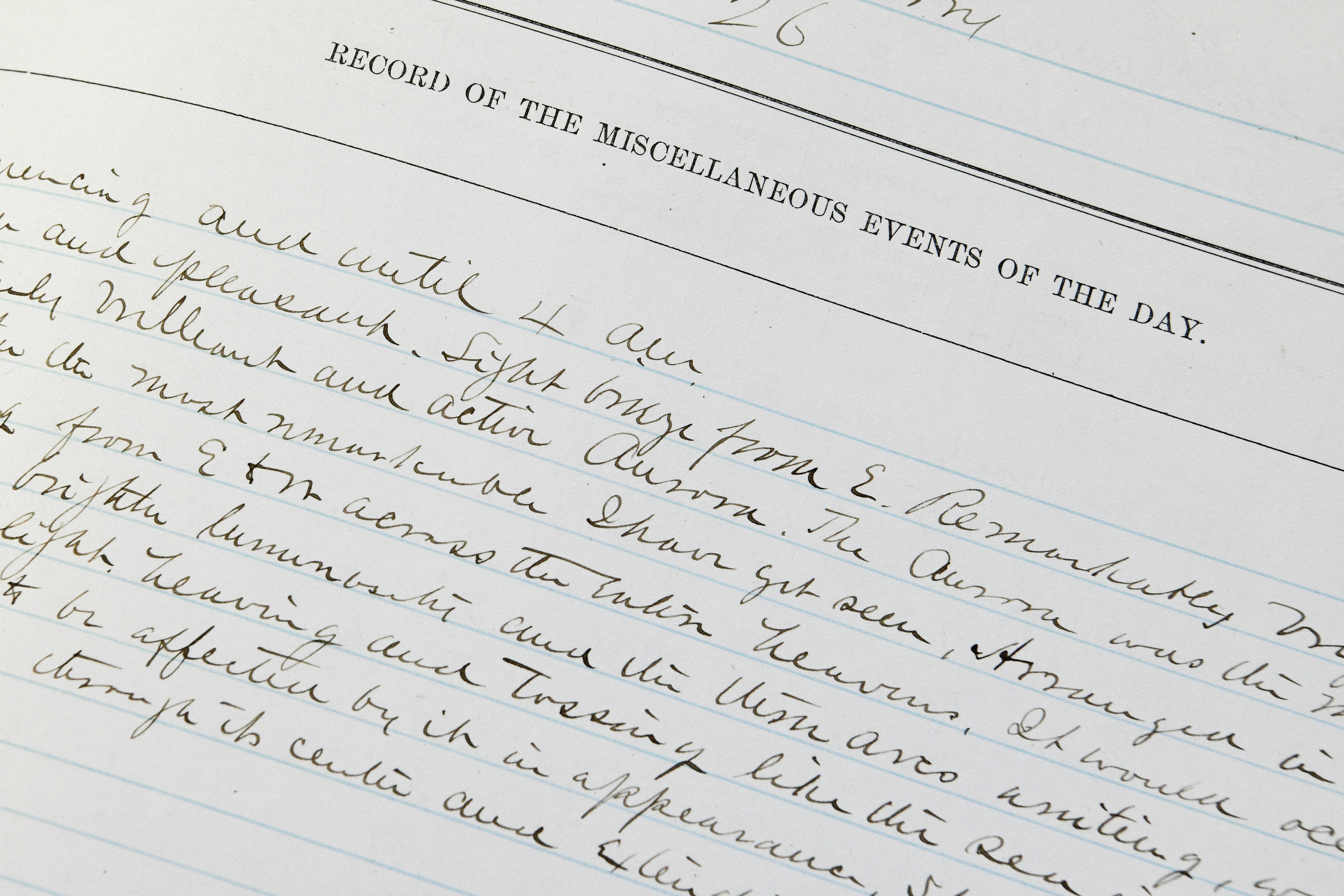
As Navy ships, the Jeannette and the Rodgers were run with a discipline reflected in their logbooks, which were usually detailed and legible. Not like the logs of whaling ships that Old Weather began transcribing in 2015. Whaling logbooks often have poor handwriting, worse spelling and erratic punctuation, Arthur says. Sometimes, as with this breathless scribble about a mutiny on the Lucretia in 1883, it’s all three:
“At last the Capt told them the time was past for Agument and the first man … drew Pistol and said Shute you Son of a Bitch and did Shute at the Capt and jumped over from the Port Side of the Ship to the Starboard and was met by the Capt who Shot Him dead …”
The whaling logbooks are challenging, but the extra effort is worth it, Kevin Wood says. Yes, the whalers make fewer daily observations than the Navy ships and generally lack instrumental weather data. “However, there are many more whaling voyages, and especially in the early years there are many ships out on the ice edge at the same time in a given year,” he says. “This will significantly augment the picture we have of the ice.”
The nun and the whaling ship
Helen Julian is a nun who lives in Darlington, in northern England. Her first logbook for Old Weather belonged to a 980-ton British naval sloop that patrolled the African coastline during World War I. It had what she calls “a very unexciting war,” but she was soon absorbed by the rhythms and details of life at sea a century ago.
“You always have a very particular relationship with your first ship,” she says. “It’s a bit like falling in love. You can’t always say why.”
We sit in the living room of her modest home, the last of the day’s sun slanting through its bay window. Helen Julian, who is 64, belongs to an Anglican religious order of sisters called the Community of St Francis. She wears a wooden, T-shaped crucifix, or St. Francis cross, over her blue tartan sweater. She describes herself as an introvert, but she’s outgoing and eager to dispel myths about her religious calling.
“If you need a friendly nun, I’m here,” she says. “I’m all in favor of making ourselves known to people who actually want to take us seriously. It’s not all ‘The Sound of Music.'”
St. Francis is the patron saint of ecology, and Helen Julian says Old Weather feels “like part of my discipleship.” She heard about the group by chance, on a radio program, and saw it as a way that someone with no scientific background could help climate science.
“It’s a contribution to an important cause and to another form of community,” she says, meaning the nerdy and unfashionably courteous Old Weather Forum, an online chat room that many volunteers speak of with affection. In one chat titled “Signs of OW addiction,” a volunteer said she continued to transcribe a logbook despite going into labor.
Helen Julian is currently working on the Fleetwing, a 19th century whaling ship whose logbook was kept by the captain’s 15-year-old daughter, Adaline Heppingstone. Whaling captains often brought wives and children on voyages, she says, but it was rare to find a log written by a teenage girl.
At the time, American whaling ships were floating abattoirs, their decks slippery with blood and oil. Many logs detail the gruesome, round-the-clock task of processing the whale: slicing off the blubber, boiling it to extract the oil, harvesting the bone. Some logs record a kill with a whale-shaped stamp.
The interests of 19th century whaling captains and 21st century climatologists converge on a long-suffering species: the bowhead whale. Bowheads feed by filtering the ocean with long vertical plates in their mouths called baleen, a substance once highly prized for making everything from horse whips to corsets. Whaling ships hunted them by patrolling the ice edge where the bowheads fed, which meant their logbooks were filled with observations about ice.
These observations were taken when the Arctic felt impossibly remote from everyday life. Today, says Wood, we know the Arctic plays a vital role in regulating the Earth’s climate, and that changes there will affect us all. Melting ice exposes more ocean or land, which, because it is darker, absorbs more sunlight and causes more heating. Melting ice on land also causes sea level rise.
In 1882, the Fleetwing was part of a U.S. fleet searching Arctic waters for bowheads. They have the longest life spans of any whale: 200 years or more. There might be bowheads alive today who remember the mass slaughter of their species — who might even have fled from the Fleetwing’s approach.
Domesticity and gore
In some of her entries in the Fleetwing’s logbook, Adaline writes of everyday pastimes. She does embroidery with her mother and takes walks on the deck. She plays checkers with the captains of nearby whaling ships, and records a visit by some “Esquimaux” selling fox skins.
In others, domesticity comes with a dollop of gore. Over a few days in April, in precise cursive with little flourishes on the capital letters, Adaline describes the crew butchering whales and boiling the blubber into oil.
Saturday 22: Today we got our first bowhead this year. We had a fine breeze and struck at 3 o’clock P.M. and we are cutting him in now it is a large one … I have been working on my lovely little cushion today, and Mother has been sewing on a wrapper that she is making.
Sunday 23: … we had a hard time to cut our whale, as it was quite rugged, but we got it all safe.
Monday 24: It is snowing a little at times but not so hard that it keeps us from boiling. This afternoon Father and Mother covered the sofa to save it from getting any oil on it.
Three weeks passed, with Adaline recording a few sightings but no catches. Then, on the afternoon of May 17, the crew spotted a whale and her calf, “and struck right away.” Writes Adaline: “We got the calf too – it was very small. We took it in on deck. We are cutting.”
Apart from the logbook, Adaline left little trace in the world. Helen Julian, transcribing the log in her cosy living room in England, had assumed the captain’s daughter had died very young. But then she was directed to a website that uses crowdsourcing to locate old graves. It noted that Adaline had died in South Yarmouth, Massachusetts, in 1957.
Helen Julian was delighted; she and the whaler’s daughter had drawn closer. “She was still alive when I was born. We overlapped. Just.”
Letters from the past
Helen Julian has never met Joan Arthur, and neither of them has met Michael Purves, another Old Weather stalwart, who lives in Victoria, British Columbia. They mainly communicate through the forum, and talk about one another fondly, like old friends. Purves laughs about them playing a Monopoly-like online game that Arthur created. Called Shipopoly, the dog-shaped playing piece is One-Eyed Riley.
Purves brings to Old Weather climate expertise and experience of northern latitudes. Now 72, he’s a retired meteorologist who spent 22 years living and working in the Yukon in northwestern Canada.
Purves lives in a blue clapboard house filled with artwork from the Yukon. On its roof is a small weather station that produces reports for his neighbors. His first ship was the Grafton, a Royal Navy battle cruiser that served in World War I. Scruffy handwriting made the logbooks hard to read, but Purves was hooked.
“There is a deeper connection when reading something handwritten than when reading the same information in print,” he says. “Reading the various entries is almost like hearing individual voices.” Once, the Grafton rescued the survivors of a torpedoed hospital ship. Reading the logs, Purves thought: “This is real. A real person saw this and wrote this.”
His work for Old Weather has driven home how quickly and profoundly the planet’s climate is changing. He has helped refine the data in the logbooks — and therefore the climate models they inform — by plotting about 350,000 hourly locations for dozens of ships, including the Jeannette and the Rodgers.
He has spent more time on a ship called the Bear than any other. Built in Scotland in 1874, the Bear spent its most illustrious years in the Arctic in the U.S. Revenue Cutter Service, a forerunner of today’s Coast Guard. Its career spanned 89 years, two centuries, two world wars and both poles. It sank in 1963 while being towed to Philadelphia to become a floating restaurant.
“I’ve done 38 years of the Bear,” Purves says, “and we’re still transcribing.” His home is a short drive from the coast; in its heyday, the Bear would have sailed past to take on coal at Ladysmith or anchor in Vancouver Harbour. “I could even look it up and tell you which days …”
Earlier this year, he was reading the Bear’s log from June 1918. It had set out to resupply the remote Alaska outpost at Point Barrow, but heavy ice forced it to turn back. Purves looked at maps published by the National Snow and Ice Data Center, a U.S. government agency based in Boulder, Colorado, to see where the ice was in June 2019. What he found was sobering.
“The ice in 2019 was more than 650 miles north of where it was on the same day in 1918,” he says. “You sit there and you think: Whoa.”
Purves feels most people have yet to grasp the gravity of climate change. “I’m 72, and I’m thinking I’ll still live to see a summer with no ice in the Arctic Ocean,” he says. “Will that be enough to wake people up? I really don’t know.”
Hell roaring Mike
The Bear’s best-known captain was an iron-fisted, hard-drinking sailor called Michael Healy – a.k.a. “Hell Roaring Mike.” Healy was born in Georgia, the son of a plantation owner and a slave. But he looked white, and his racial background remained secret until 1971, decades after his death. Only then was Healy recognized by the U.S. Coast Guard as the first African American to command a federal ship.
In 1880, Healy was a lieutenant on another ship that searched in vain for the missing Jeannette. Three years later, at the Bear’s helm, he ruled Alaska. He chased poachers and smugglers, rescued shipwrecked sailors, delivered mail and medicine, and transported missionaries, criminals, scientists and VIPs. Declared the New York Sun, “If you should ask in the Arctic Sea, ‘Who is the greatest man in America?’ the instant answer would be, ‘Why, Mike Healy.'” The newspaper continued: “He knows the Bering Sea, the Straits, and even the Arctic as no other man knows them.”
The Bear’s logbooks are among the longest records of marine observation in the Arctic. Nearly unbroken, they run to tens of thousands of pages. While packed with weather observations, the logs are also terse and unrevealing, even during Healy’s most dramatic moments, like when he rescued 160 people from five whaling ships wrecked by a storm:
“5 August 1888: At 0640 got underway, 0755 came to anchor among the whaling fleet, Point Barrow… Received on board part of crews all wrecked and in destitute condition.”
“When I am in charge of a vessel, I always command; nobody commands but me,” Healy once declared. “I do not steer by any man’s compass but my own.” But his heroism sat uneasily with a reputation for abusing alcohol and his fellow sailors. Another terse logbook entry carries the seeds of his downfall:
8 July 1889: Captain Corrigan of whaling bark “Wanderer” came on board requesting assistance, his crew being in a state of mutiny … Sent an officer and boats.
Healy was later accused of “tricing” some of the mutineers — that is, tying their hands behind their backs, then hanging them so that their toes barely touched the deck. He also inflicted the same agonies on his own crew. In 1896, after a trial in San Francisco, he was stripped of the command of the Bear. He died eight years later.
In 2015, a Coast Guard icebreaker named after him, the Healy, became the first unaccompanied U.S. surface ship to reach the North Pole.
Endurance and hope
The pack ice that destroyed those old ships now retreats enough during the summer to allow luxury cruises through Arctic waters. A New Zealand company called Heritage Expeditions makes regular voyages to Wrangel Island, near where the Jeannette was first trapped, its desperate crew surviving by eating the polar bears and walruses that today’s tourists come to see.
Those tourists are rarely disappointed. Polar bears gather on Wrangel Island in ever-increasing numbers, possibly driven ashore by the loss of sea ice, say researchers. The “measureless frozen ocean” that Captain De Long described is no more, and his era’s obsession with conquering the North Pole has been replaced by the graver challenge that drives so many Old Weather volunteers: averting catastrophic climate change.
For those volunteers, the logbooks are a reminder not only of how much the world has changed, but also of the human capacity for ingenuity, endurance and hope. Even in the permanent gloom of an Arctic winter, with the ice grinding and screeching around his ship, De Long wrote:
If we are thrown out on the ice we must try to get to Siberia, if we can drag ourselves and food over the two hundred and forty miles intervening; sleds are handy, dogs ready, provisions on deck, knapsacks packed, arms at hand, records encased. What more can we do? When trouble comes we hope to be able to deal with it, and survive it!
(For an online graphic https://graphics.reuters.com/CLIMATE-CHANGE-ICE-SHIPLOGS/0100B4QE2FC/index.html)
(Reporting by Andrew R.C. Marshall, editing by Kari Howard)
